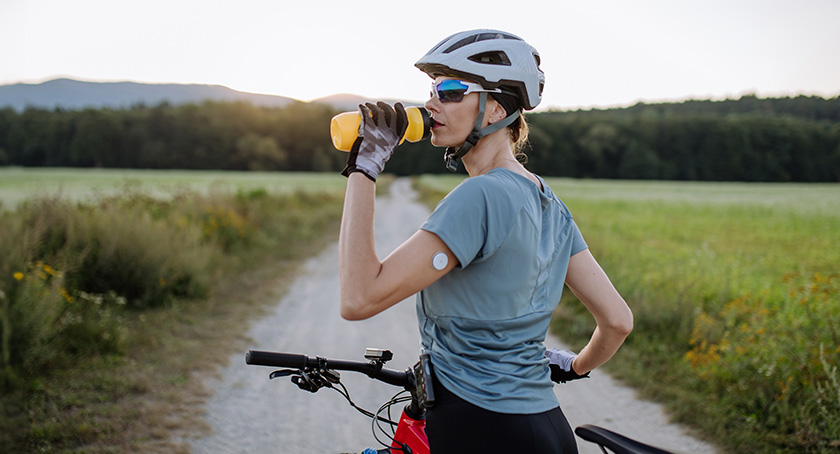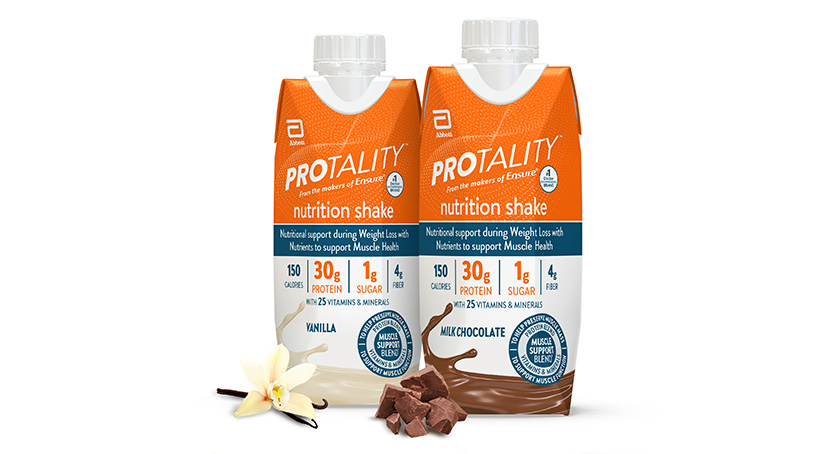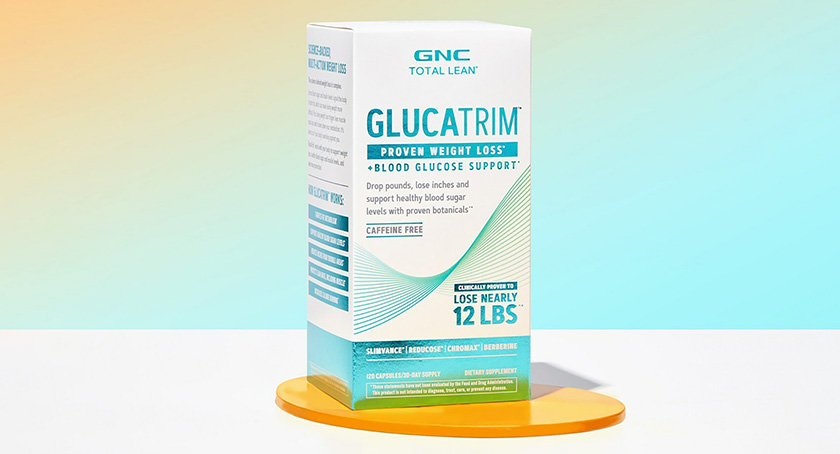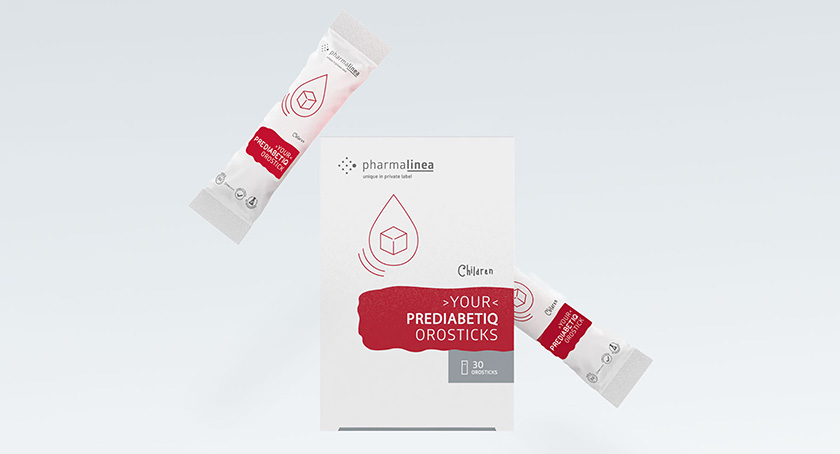Features
The Next Frontier in Blood Sugar Management
GLP-1 medications, new glucose trackers, and calls for stronger substantiation are fueling this white-hot category of health products.

By: Mike Montemarano

Blood sugar management is increasingly recognized as a crucial aspect of health and wellness. Consumers aim to stabilize blood sugar spikes and mitigate insulin resistance to manage weight, improve metabolism, and prevent diabetes.
With prediabetes and type 2 diabetes at all-time highs, and the recent introduction of GLP-1 drugs bringing metabolic health into greater focus, it’s important for the natural products industry to adjust to new expectations.
“Blood sugar management as a modality for weight loss is relatively novel,” noted Thom King, chief innovations officer at Icon Foods. “Over the past 6 months we are starting to see a lot more companies focusing on supplements, meal replacement shakes, and even some snack foods, specifically designed for controlling blood sugar. But there is a lot more space.”
Diabetes and prediabetes rates have been rising rapidly, due in large part to a reliance on ultra-processed foods and sedentary lifestyles. Recent estimates suggest that ultra-processed foods represent 58% of all calories Americans consume.1
The number of adults with diabetes worldwide has more than tripled in the past 20 years, according to the International Diabetes Foundation.
In the U.S., an estimated 38.4 million people have diabetes, according to the Centers for Disease Control and Prevention, with 1.2 million more type 2 diagnoses occurring every year. More than twice as many people (97.6 million) are living with prediabetes, which is an elevation in blood glucose levels that borders on a type 2 diagnosis.
Consumer Insights and Top Ingredients
According to Mintel, 22% of U.S. consumers who track their sugar consumption do so because they’re concerned about the impact on blood sugar changes. The regulatory environment makes it quite difficult to make claims such as “diabetic friendly” or “low glycemic index,” so there may be a sizable opportunity for brands that can educate consumers on blood sugar impact if they can navigate the rules pertaining to structure-function claims and marketing. “Just 8% of consumers agree they buy items labeled as low-GI,” Mintel reported.
Added sugars are enemy number one. From 2019 to the end of 2023, “no added sugar” was the most common claim related to blood glucose management, found in 4% of global food and drink launches, followed by high/added protein (4%), high/added fiber (3%), whole grain (3%), sugar-free (2%), low/reduced sugar (2%), low/no/reduced carbs (0.5%), low/no/reduced glycemic (0.3%), high satiety (0.3%), and diabetic friendly (0.3%), Mintel noted.
On a global scale, 17% of consumers in 2024 told FMCG Gurus they’d like to address blood sugar issues over the next 12 months, and it’s largely tied to weight management, noted Mike Hughes, head of research and insight at FMCG Gurus. “Indeed, 41% of consumers say they plan to address their waistlines over the next 12 months as worry about increased weight becomes more common, with the same figure (41%) also planning to address their digestive health.” Meanwhile, 26% of these respondents said they had either diabetes or prediabetes, Hughes said.
In the realm of dietary supplements, the blood sugar management sector is led by several specialty ingredients. According to data on products tracked by SPINS, over 52 weeks ending in May 2024, chromium led the category in terms of total dollar sales ($41.4 million, CAGR of -1.1%), followed by milk thistle ($36.6 million, +18.3%), alpha lipoic acid ($36.1 million, -4.2%), cinnamon ($30.7 million, +33%), ginseng ($14.8 million, -7.9%), berberine/barberry ($12.2 million, +110.6%), green coffee extract ($3.3 million, -47.2%), and Gymnema sylvestre ($2.6 million, -11.2%).

A new frozen meal brand by Nestlé called Vital Pursuit provides GLP-1 drug users with portion-aligned meals rich in protein, fiber, and essential nutrients.
GLP-1 Agonists and Viral Trends
The GLP-1 agonist class of drugs has sent shockwaves through a population plagued with diabetes, obesity, and poor metabolic health.
“One in eight adults have already used a GLP-1 drug, which is pretty crazy to think about,” said Brandon Casteel, vice president of partnerships at SPINS. “Novo Nordisk reported that 20,000 people start taking Wegovy every week, and this is amid a lot of headwinds, such as the fact that it costs about $1,000 per month to take these drugs.”
“Walmart reported that consumers on these drugs buy ‘fewer calories per basket,’ but the industry still seems to view this as a nascent trend,” said Casteel. “They are currently working on a pill format which would arguably open up the market to even more consumers given that it will be cheaper to distribute and easier for these companies to make at scale.”
Several products are being marketed as complementary items for GLP-1 drug users.
Abbott Nutrition recently launched Protality, a high-protein nutrition shake which targets muscle health maintenance for people experiencing weight loss, including those on GLP-1 drugs.
Nestlé has also launched a frozen meal brand called Vital Pursuit, specifically to provide portion-aligned meals rich in protein, fiber, and essential nutrients to those on a GLP-1 medication for weight loss.
Supplements that can serve a dual purpose of helping the body metabolize sugar in a way that complements GLP-1 drugs, while also improving uptake of essential nutrients, can be especially useful, noted Shelby Agan, senior scientific affairs manager at Nutrition21. “Chromium has been shown to influence metabolism and, when consumed as part of a weight loss and exercise program, can help promote lean body mass.”
GLP-1 agonists aren’t a silver bullet, and side effects can be significant.
According to Sherry Frey, vice president of total wellness at NIQ, GLP-1 agonist users are “struggling from a GI standpoint, and are buying a lot of over-the-counter anti-nausea drugs. They’re shifting away from supplementation, and aren’t necessarily buying healthier foods than before.”
“The way GLP-1 agonists work is by triggering the receptor in your brain that signals satiety, but they also trigger another receptor that slows gastric emptying,” King said. “If food sits in your stomach for a long time, it has opportunities to ferment which can cause stomach aches.”
Denisse Colindres, senior manager of nutrition communication at BENEO, noted that bone density can suffer during weight loss, especially if that weight loss is quick. For people already predisposed to bone loss, such as women going through (peri)menopause, ingredients that can aid in calcium absorption like prebiotic fibers are worth considering.
Dan Murray, vice president of business development at Xsto Solutions, warned against treading into drug/disease claim territory here. “GI issues can be assisted or improved by supplements, but they are not meant to replace true medical care.”
Going viral on social media can have long-lasting effects. While berberine may have hit peak virality on social media many months ago, dubiously dubbed as “nature’s Ozempic,” it continues to reach new monthly sales highs, noted Lang.
“I think that legitimate influencers — people that actually know what they’re talking about — should use (dietary supplements), track the data, and show people that they work. It comes down to education,” King said. “Drugs like Ozempic, Wegovy, and Mounjaro — those are backed by massive pharmaceutical companies that have the war chest to be able to put out all sorts of marketing. And it’s a quick, easy solution. But I’m not sure that it’s a long-term solution.”
Several influencers have established themselves as authoritative voices on blood sugar. Jessie Inchaupsé, a biochemist and author known online under the moniker Glucose Goddess, has amassed 4.3 million followers on Instagram by offering practical advice to achieve glucose balance based on recent clinical research. Inchaupsé also just launched a new supplement brand, GlucoseRevolution, with Anti-Spike Formula as its debut product. The blend of white mulberry, lemon flavonoid, and cinnamon bark extracts and antioxidants is meant to be taken ahead of the most carb-heavy meal of the day.
In the wake of the blood-sugar boom on social media, the U.S. Federal Trade Commission (FTC) has expressed concerns about influencer marketing. Unchecked influencer claims on TikTok and other platforms will be a major sticking point that can potentially land the category in hot water with FTC, FDA, and retailers.

Product Trends
Many finished products feature multi-ingredient formulas that target different mechanisms of action.
Thorne’s Diabenil supplement, for instance, combines Gymnema sylvestre and Momordica charantia extracts, to support already-normal blood sugar levels with bilberry, a flavonoid-rich extract that can support ocular tissue; a liposomal quercetin to prevent the conversion of glucose into sorbitol to support eye, kidney, and nerve health; lipoic acid to reduce lipid peroxidation of nerve tissue; and chromium picolinate and vanadyl sulfate to maintain already normal hemoglobin A1C levels, the company said.
Meanwhile, Vitamin Shoppe’s Vthrive Advanced Blood Sugar Support capsules feature a lineup of top-selling ingredients, including a 500 mcg dose of Chromax chromium picolinate, 500 mg of berberine, 300 mg of organic cinnamon, and 200 mg of alpha-lipoic acid.
Earlier this year, GNC launched Total Lean GlucaTrim, a multi-ingredient weight loss supplement that features a botanical blend called Slimvance; Reducose, a botanical extract shown to support healthier glucose and insulin responses after a meal; Chromax chromium picolinate; and berberine. GNC reported the new formula protects against the loss of critical muscle mass.
Even staple supplements now feature add-on ingredients that can support blood sugar claims.
For instance, fish oil specialist Nordic Naturals has launched a Blood Sugar Support blend of omega-3s, alpha-lipoic acid, and chromium.
Standard Process also recently introduced Glucose Assist protein shakes, which combine 15 grams of plant-based proteins with a proprietary blend of plant extracts and a slowly-digestible complex carb evidenced to slow postprandial glucose release.
Blood sugar management supplements largely use “commodity” ingredients like banaba leaf, glucans, fibers, Gymnema, ALA, fenugreek, and more, said Matevž Ambrožič, marketing director at private label manufacturer PharmaLinea. “We also see a tendency for many ingredients to be included in a fairy-dust fashion, merely to be included on the list and hopefully have an effect,” he said. “It may be better to include the right mix of fewer, effective ingredients at clinically relevant dosages.”
Doing so may help define the product’s target consumer, Ambrožič noted, “from diabetics, to prediabetics, to anyone managing their blood glucose levels for weight loss, longevity, healthy aging, sustained energy and focus, or sports performance.”

GNC’s botanical-focused Total Lean GlucaTrim is suitable for “health-conscious consumers interested in weight loss without a prescription,” the company said.
Many ingredient suppliers with firm footing in the supplement space are claiming stake in the center aisles of grocery stores through better-for-you versions of foods typically laden with refined carbs.
“Manufacturers are differentiating their products through ingredient choices like low glycemic carbohydrates, ingredients that slow or inhibit carbohydrate digestion/absorption, or by adding proteins and fibers. Sweeteners such as stevia and erythritol can be good choices for these products,” said Corey Scott, principal scientist at Cargill.
Botanical specialist Artemis International recently entered the food arena with the launch of Fenuflakes, a formulation of debittered, defatted flakes of fenugreek seeds rich in fiber and protein, which can lower the glycemic index of staple foods like baked goods, cereals, pasta, and more.
GLP-1 will continue to be a popular target for businesses.
A recent clinical study by BENEO found that Palatinose, its branded isomaltulose, stimulates the production of GLP-1 and other gut hormones associated with blood sugar control in overweight adults, even when consumed after a meal.
“The findings show that Palatinose has a beneficial effect on metabolic parameters that are important for maintaining a healthy body weight, blood glucose control, and cardiovascular health. GLP-1 has beneficial impacts on blood glucose control and metabolism including the reduction of appetite and thereby weight gain,” said Colindres. Isolmalt, a bulk sweetener made with isomaltulose, “has a very low effect on blood sugar levels and does not trigger insulin release to any significant extent. With its sugar-like taste, this bulk sweetener can replace sugar in a 1:1 ratio in various applications.”2

In the past 20 years the number of adults globally living with diabetes has tripled, according to the International Diabetes Foundation. (Photoroyalty/shutterstock.com)
Should Everyone Be Tracking Blood Sugar?
Consumer-grade continuous glucose monitors (CGMs) are poised to shake up the health and wellness market.
While these devices were formerly available only through prescriptions for diabetes, FDA approved the first over-the-counter CGM in March this year. “Giving more individuals valuable information about their health, regardless of their access to a doctor or health insurance, is an important step forward in advancing health equity for U.S. patients,” stated Jeff Shuren, MD, JD, director of FDA’s Center for Devices and Radiological Health.
According to Bloomberg, Apple is working to develop a noninvasive, continuous glucose monitoring capability for the Apple Watch, with similar speculation that Samsung is working on CGM capabilities for its smart watches.
Mintel reported that more than one third (33%) of U.S. consumers don’t use but are interested in using wearable blood sugar measurement devices.
“Every consumer with a smartwatch will be able to track their blood glucose levels in real-time,” said Ambrožič. “When that moment comes, millions of consumers will come to the realization that they need to do something about their blood glucose … We also expect connections between supplements and tracking devices to evolve, with supplement brands offering apps connected to smartwatch measurements, tracking of supplementation efficacy, and offering personalized recommendations for dosing.”
Studies show that certain “healthy” people sometimes experience diabetic-like glucose spikes in response to certain foods only detectable via CGM. And CGMs can be a useful way for consumers to get ahead of the curve if they’re at higher risk of diabetes due to family history, medication usage, or other factors, noted Lakshmi Mundkur, PhD, vice president of biological R&D at Sami-Sabinsa Group.3
“A CGM helps you understand your body better and make lifestyle changes to optimize your health. Personally, I’m a very health-conscious eater so it was interesting to see the things that spiked my blood sugar and I have since become more mindful about eating them … A CGM is a cost-friendly alternative to gaining data and making some of those changes on your own,” said Kash Rocheleau, CEO of Icon Foods.
At Vitafoods Europe, PharmaLinea showcased a new private-label orosoluble powder specifically formulated for rapid glucose reduction, with CGM users in mind. The Prediabetiq Orostick, which contains a mix of chromium and a proprietary ingredient called Qgluco, has been shown to offer an effect on blood glucose and insulin resistance after a meal within a matter of hours.
For non-diabetic people, tracking blood sugar can help solve a piece of the larger puzzle of metabolic syndrome.
“Managing one’s blood sugar is probably the most important mechanism in controlling one’s weight and also their proclivity for contracting metabolic disease,” said King. “Metabolic disease is a direct result of a person’s blood sugar being out of whack; as your blood sugar goes up, your pancreas secretes more insulin, and eventually you become insulin resistant.”
On the other side of the coin, “these devices can be difficult to interpret if you don’t have enough context,” noted Agan. “There’s some nuance in how CGMs are impacted by things like exercise, supplements, and alcohol consumption. For some people, having constant access to this data can cause stress or fixation.”
“We believe blood glucose management products should partner with CGM brands or have white label solutions done for them. We aren’t seeing much activity yet in that direction and we believe these partnerships will be crucial,” said Ambrožič.
CGMs are only useful if the user is disciplined enough to act on the data, so only a certain portion of consumers may use them in the long run. “The more serious glucose devices are immensely helpful for hour-by-hour tracking. This allows people to self-regulate and take action immediately, which is great, so long as they do the right thing. If they want to remain on the couch and eat cookies, no equipment will help them,” said Murray.

Substantiating the Role of Supplements
In 2024, “consumers are taking a more considered approach to spending on health wellness products. This means they are adopting a back-to-basics approach to health and are turning to everyday food and drink that they know and trust, and deem natural and nutritious, over functional and fortified products,” said Hughes.
“I don’t think there’s enough education material, in a vernacular that the consumer understands, about supplements that can help manage blood sugar levels, like berberine, cinnamon, and Gymnema sylvestre,” said King.
Scott noted that these ingredients need more studies that meet the standard of double-blinding, randomization, and placebo controls. “The reported effects need to be notable and not marginal … it’s important that the study results are published, regardless of outcome.”
“Only a fraction of these products have reliable clinical evidence of efficacy and safety,” noted Mundkur. “Several natural products exhibit similar mechanisms of action as new pharmacological drugs.”
More validated research on hyperglycemic people with safety, side effects, and effective forms and dosages in mind can hopefully heighten healthcare practitioner’s engagement with this category, Mundkur noted. “Physicians rarely prescribe any supplement for diabetes patients. But as we saw with curcumin, a robust body of science can result in referrals by physicians,” he said.
Estimates suggest that the average American eats between 10 and 15 grams of fiber, which is less than half of what’s recommended. King said that fiber is strongly under-appreciated.
Soluble fibers can slow down digestion, thereby slowing the release of glucose into the bloodstream, helping to prevent postprandial spikes in blood glucose, he noted. There’s plenty of evidence that high-fiber foods help to regulate appetite and prevent overeating, which is important for weight management and cravings.
A review of studies on type 2 diabetes patients found that high-fiber diets were linked to improved glycemic control and insulin sensitivity. Prebiotic fibers, by changing the microbiome, can also improve glucose metabolism and overall metabolic health, according to a 2020 Lancet review.4-7
Different fibers can deliver varying health benefits. Insoluble fiber from plants, along with bioactives like quercetin, resveratrol, catechins, and anthocyanins, have targeted effects that may improve health outcomes, noted researchers from Brightseed and the University of Minnesota in a recent review.8
BENEO’s fibers Orafti inulin and oligofructose, each derived from chicory root, have been shown to provide unique metabolic benefits, noted Colindres, including “balanced intestinal flora, weight management, calcium absorption, and low-glycemic attributes.”
Of the many nutrients marketed for blood sugar support, just a handful are directly involved in processing blood sugar, noted Agan. “Chromax from Nutrition21 is a highly bioavailable form of chromium, an essential trace mineral that supports healthy insulin function to promote normal carbohydrate metabolism,” Agan said.
“Once absorbed, chromium is thought to enhance the action of insulin, which in turn can impact the body’s ability to take up carbohydrates, lipids, and even amino acids by tissues.”
GLP-1 products are “only a start” when it comes to the options and possibilities for modulating glucose metabolism, noted Murray. When it comes to nutraceuticals, “unfortunately, most trials are designed to confirm a product works … We need to embrace products that lower glucose, raise transketolase, or somehow affect blood glucose or appetite in a healthy way,” Murray noted.
Greater industry-wide investment in researching dietary strategies and supplements to rein in craving and hunger issues can be an important step in solving the metabolic puzzle. “Satiety products are generally not cheap, and therefore don’t get as much attention, but this is a good way to start to address the issue,” Murray said.
Certain sweeteners may also modify broader behavioral patterns like caloric intake over time.
“Cargill has invested in a number of clinical studies to better understand how stevia impacts blood glucose levels, appetite, and more,” said Scott. A recent study found both stevia-sweetened beverages and water had no impact on blood glucose levels. “It also determined that participants who consumed stevia-sweetened drinks reported reduced feelings of hunger compared to those who consumed water. Further, the study found stevia drinkers consumed the fewest calories, on average 105 kcal less than water drinkers or participants given beverages sweetened with caloric sweeteners.”

Emerging Research
New evidence is challenging commonly-held beliefs about nutrition and blood sugar management.
“The Glycemic Index (GI) told us that white bread will raise everyone’s blood sugar very quickly and has a GI score of 73, while a banana gives a slower increase in glucose with a GI score of 48,” Agan noted. “Scientists at the Weizmann Institute of Science looked at large groups of participants’ glycemic responses to the same foods and surprisingly showed that people’s individual responses vary greatly from what the glycemic index shows.” For some, bananas caused blood sugar spikes, while others saw drops in glucose following white bread. “One-size-fits-all diets have failed miserably,” she said.
Colindres noted a recent study looked at the combined effects of BENEO’s Palatinose, a disaccharide ingredient that slows down the release of glucose, with OraftiSynergy1 prebiotic fiber. The authors found the combination can help to overcome glycemic variability in study participants who are instructed to consume a real-world diet, as opposed to the well-controlled, uniform diets typical of clinical trials. On a broader level, the study added to a growing body of evidence that there is a relationship between microbiota composition and blood glucose management, Colindres noted.9
Balancing blood sugar levels through long-term dietary patterns may have a positive impact on other chronic health challenges, according to recent studies.
“When you look at neurodegenerative diseases, like dementia and Alzheimer’s, and their causes, a buildup of Lewy Body and amyloid plaque on the brain, a big contribution to that plaque level is from glucose or blood sugar levels,” King noted.
Further, “for individuals who can metabolize glucose normally, there is marginal evidence that endpoints like mood and appetite are affected by being in a low blood sugar state,” said Scott. “There is also marginal evidence that sustained blood glucose has benefits for athletic performance.”
In addition to diminishing life expectancy and overall quality of life, insulin resistance is increasingly recognized as a potential causative factor of PCOS in women, a “metabolic condition that affects quality of life and can be one of the causes of infertility,” noted Maja Orešnik, science and research director at PharmaLinea.
Consumers are broadly averse to “unnatural” sweeteners. Additionally, new studies that stray from prior consensus are fueling concerns about sugar alcohols in particular.
Sugar alcohols may be involved in platelet activity. For instance, a new study in the European Heart Journal found that, both in thousands of in vivo fasting blood plasma samples and in a small group of human volunteers, the use of the sweetener xylitol enhanced multiple forms of platelet reactivity and in vivo thrombosis formation.10
Similarly, a team of Cleveland Clinic researchers writing in Nature Medicine studied health outcomes of 4,000 people in the U.S. and Europe, and found that those with the highest blood concentrations of erythritol experienced a heightened risk of an adverse cardiac event like heart attack, stroke, or death. This study also included a metabolomics analysis, which linked circulating erythritol levels to platelet reactivity and thrombosis formation in vivo.11
About the Author: Mike Montemarano has been the associate editor of Nutraceuticals World since 2020. He can be reached at mmontemarano@rodmanmedia.com.
References
1. Kelly, A. et al. (2022). The impact of caloric availability on eating behavior and ultra-processed food reward. Appetite. 1:178:106274. doi: 10.1016/j.appet.2022.106274.
2. Zhang, J. et al. (2024). Isomaltulose Enhances GLP-1 and PYY Secretion to a Mixed Meal in People With or Without Type 2 Diabetes as Compared to Saccharose. Molecular Nutrition & Food Research. 68(4):e 2300086. doi: 10.1002/mnfr.202300086.
3. Hall, H. et al. (2018). Glucotypes reveal new patterns of glucose dysregulation. PLOS Biology. 16(7): e2005143. https://doi.org/10.1371/journal.pbio.2005143.
4. Fang Yuan, J. et al (2014). The effects of functional fiber on postprandial glycemia, energy intake, satiety, palatability and gastrointestinal wellbeing: a randomized crossover trial. Nutrition Journal. 13: 76 doi: 10.1186/1475-2891-13-76.
5. Salleh, S. et al (2019). Unravelling the Effects of Soluble Dietary Fibre Supplementation on Energy Intake and Perceived Satiety in Healthy Adults: Evidence from Systematic Review and Meta-Analysis of Randomised-Controlled Trials. Foods. 8(1), 15; https://doi.org/10.3390/foods8010015.
6. Mao, T. et al (2021). Effects of dietary fiber on glycemic control and insulin sensitivity in patients with type 2 diabetes: A systematic review and meta-analysis. Journal of Functional Foods. 82. https://doi.org/10.1016/j.jff.2021.104500.
7. Gurung, M. et al (2020). Role of gut microbiota in type 2 diabetes pathophysiology. eBioMedicine. 51. https://doi.org/10.1016/j.ebiom.2019.11.051.
8. Timm, M. et al (2023). Beyond Insoluble Dietary Fiber: Bioactive Compounds in Plant Foods. Nutrients. 15(19), 4138; https://doi.org/10.3390/nu15194138.
9. Kordowskim, A. et al (2022). Palatinose (Isomaltulose) and Prebiotic Inulin-Type Fructans Have Beneficial Effects on Glycemic Response and Gut Microbiota Composition in Healthy Volunteers—A Real-Life, Retrospective Study of a Cohort That Participated in a Digital Nutrition Program. 9; https://doi.org/10.3389/fnut.2022.829933.
10. Witkowski, M. et al (2024). Xylitol is prothrombotic and associated with cardiovascular risk. European Heart Journal. https://doi.org/10.1093/eurheartj/ehae244.
11. Witkowski, M. et al (2022). The artificial sweetener erythritol and cardiovascular risk. Nature Medicine. 29, 710-718. https://doi.org/10.1038/s41591-023-02223-9.




















